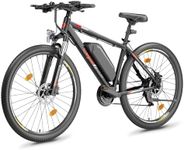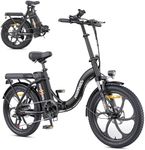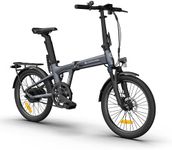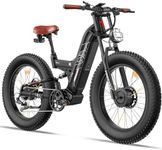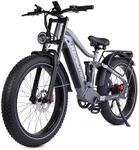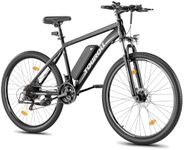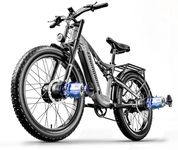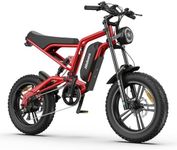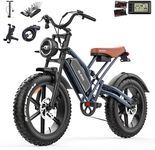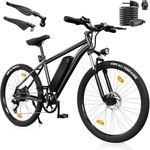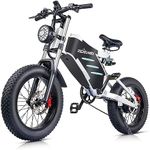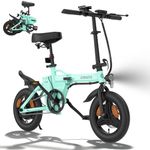Buying Guide for the Best Electric Bikes
Choosing the right electric bike can significantly enhance your commuting experience, leisure rides, or even off-road adventures. Electric bikes, or e-bikes, come with a variety of features and specifications that cater to different needs and preferences. Understanding these key specifications will help you make an informed decision and select an e-bike that best fits your lifestyle and riding requirements.Motor PowerMotor power, measured in watts, determines how much assistance the bike can provide. It's crucial because it affects the bike's ability to handle different terrains and speeds. Motors typically range from 250W to 750W or more. A 250W motor is suitable for flat terrains and casual riding, while a 500W motor offers more power for hilly areas or heavier loads. If you plan to tackle steep hills or require faster acceleration, a 750W motor or higher might be necessary. Consider your typical riding conditions and choose a motor power that aligns with your needs.
Battery CapacityBattery capacity, measured in watt-hours (Wh), indicates how far you can travel on a single charge. This is important for determining the range of your e-bike. Batteries usually range from 300Wh to 700Wh. A 300Wh battery might suffice for short commutes or occasional rides, while a 500Wh battery is better for moderate distances. For long-distance rides or if you plan to use the bike frequently, a 700Wh battery or more is advisable. Assess your typical travel distance and frequency to select the right battery capacity.
RangeThe range of an e-bike is the distance it can travel on a single charge, influenced by factors like battery capacity, motor efficiency, rider weight, and terrain. It's crucial for planning your rides without worrying about running out of power. E-bikes can have ranges from 20 miles to over 100 miles. If you use the bike for short city commutes, a range of 20-40 miles might be sufficient. For longer rides or touring, consider a range of 60 miles or more. Think about your typical ride length and choose a range that comfortably covers it.
Frame TypeThe frame type of an e-bike affects comfort, style, and functionality. Common types include step-through, step-over, and folding frames. Step-through frames are easy to mount and dismount, ideal for casual riders or those with mobility issues. Step-over frames offer a traditional bike feel and are often preferred for sporty or off-road riding. Folding frames are compact and convenient for storage or transport, suitable for urban commuters. Consider your riding style and storage needs when choosing a frame type.
WeightThe weight of an e-bike impacts its portability and ease of handling. Lighter bikes are easier to carry and maneuver, especially if you need to lift them onto public transport or up stairs. E-bikes typically weigh between 40 to 70 pounds. If portability is a priority, look for a lighter model. However, heavier bikes often offer more stability and durability, which might be beneficial for off-road or long-distance rides. Consider how you plan to use the bike and where you will store it to determine the ideal weight.
Braking SystemThe braking system is crucial for safety, especially at higher speeds. Common types include rim brakes, disc brakes, and hydraulic disc brakes. Rim brakes are lighter and more affordable but may not perform well in wet conditions. Disc brakes offer better stopping power and are more reliable in various weather conditions. Hydraulic disc brakes provide the best performance with smooth and powerful braking, ideal for high-speed or off-road riding. Consider your typical riding conditions and prioritize a braking system that ensures your safety.

